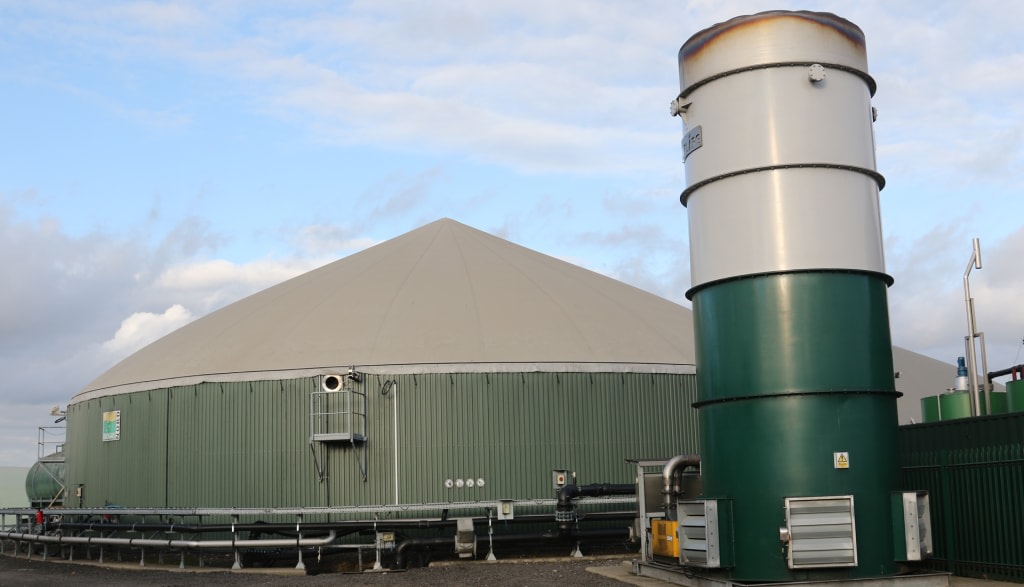An ‘Ag-bag’ or agricultural bag typically refers to a type of storage system used to preserve and store large quantities of forage crops.
Ag-bags are large sealed plastic tubes or bags, usually made of white polyethylene which reflects ultra-violet light, protecting the contents. These bags can range in size from around 8 to 12 feet in diameter and up to 300 feet in length. The newly harvested crops are loaded into the bags using specialised equipment. The bags are then covered with green nets to protect them further and to blend in with the surrounding countryside.

As the ag-bags are filled, excess air is squeezed out to create a compact and airtight environment inside. This anaerobic condition facilitates the fermentation process, which preserves the forage by creating lactic acid, preventing spoilage and maintaining its nutritional content.
Ag-bags are a convenient alternative to traditional silos or silage pits, especially for smaller farms or temporary storage needs. They are relatively easy to install and can be placed directly in the field close to where the crops are harvested, reducing the time and effort required to transport the forage to a central storage facility.
What happens to the crops stored in the Ag-bags?
The foraged crops are left stored in Ag-bags in fields to ferment for around 2 years. Our Team then collect the crops to take back the the Farm and feed into our biodigesters at the biogas plant.
Here, natural anaerobic digestion processes turn the crops into biogas (mainly methane and CO2) and a nutrient-rich digestate. Some of the biogas is used to power our farm operations, or used to generate electricity. What’s left over is fed into the national grid.

How does anaerobic digestion work?
Anaerobic digestion is a series of chemical reactions carried out by bacteria in the absence of oxygen. The bacteria digests organic matter, such as plant material, to produce methane, CO2 and a range of other trace gases, collectively described as biogas.
Read more about the process here

The biogas is ‘cleaned’ and ‘improved’. CO2 is separated for use in the food and beverage industries as a high-quality food-grade and sustainable alternative to traditional means of manufacturing CO2. Read more about how we capture CO2 here

The remaining gas – now called biomethane – is made ready for the gas grid. Apsley Farms generates enough energy to supply over 8,000 homes with green gas instead of fossil fuels. Read more about this process here.

Our range of sustainable gardening products include soil improving mulch and liquid plant feed is derived from nutrient-rich digestate, a by-product of renewable energy production on the Farm.

